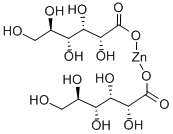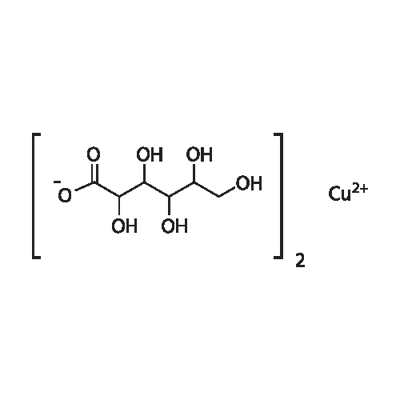Potassium gluconate
Synonym(s):D -Gluconic acid potassium salt;2,3,4,5,6-Pentahydroxycaproic acid potassium salt;Gluconic acid potassium salt;Potassium D -gluconate;Potassium gluconate
- CAS NO.:299-27-4
- Empirical Formula: C6H11KO7
- Molecular Weight: 234.25
- MDL number: MFCD00064211
- EINECS: 206-074-2
- SAFETY DATA SHEET (SDS)
- Update Date: 2025-12-17 09:49:58

What is Potassium gluconate?
Absorption
Potassium is rapidly and well absorbed. A 2016 dose-response trial found that humans absorb about 94% of potassium gluconate in supplements, and this absorption rate is similar to that of potassium from potatoes .
Toxicity
Acute oral toxicity (LD50): 9100 mg/kg in the mouse
Toxicity from overdose is rare but may result from intentional ingestion of potassium. Iatrogenic overdoses may occur .
Local irritation after ingestion causes GI upset. Severe hyperkalemia after large IV or oral overdoses causes muscular dysfunction including weakness, paralysis, cardiac dysrhythmias, and rarely death .
Mild to moderate toxicity
Nausea, vomiting, diarrhea, paresthesias, and muscle cramps are common. Rarely, gastrointestinal bleed may occur.
Severe toxicity
In severe toxicity, muscular weakness progressing to paralysis may occur. Cardiac arrhythmia often occur at concentrations greater than 8 mEq/L and death from cardiac arrest at concentrations of 9 to 12 mEq/L or higher. Characteristic ECG findings occur in the following order: peaked T waves, QRS complex blends into the T wave, PR interval prolongation, P wave is lost and ST segments depress, merging S and T waves, and finally, sine waves. The presence of the sine wave is a near terminal event, signaling that hemodynamic collapse and cardiac arrest are near. As serum hyperkalemia is corrected towards normal concentrations, the ECG changes resolve in reverse order .
Chemical properties
white to off-white crystalline or granular powder
The Uses of Potassium gluconate
Potassium Gluconate is a nutritional source of potassium used in fortification. it has solubility in water at 20°c of greater than 900 g/l, and a ph of approximately 7.0 at 1% solution. it can be used as a partial replacement for sodium chloride to reduce the level of sodium, such as in cheese and bakery goods.
The Uses of Potassium gluconate
Replenisher (electrolyte).
The Uses of Potassium gluconate
Potassium D-gluconate widely used as sequestering compounds for metal ions in alkaline systems. It is used in a newly developed process entitled ARS for the prevention of shrinkage in dyed wool fabric. Potassium gluconate has been shown to elevate lactate production, and ATP content, as well as induce the Hemoglobin (methemoglobin) reduction rate in rat erythrocytes. It is used in cell culture and in large scale applications such as the cleaning of metal surfaces.
What are the applications of Application
D-Gluconic acid potassium salt is an agent that can increase K+ transport of erythrocytes
Indications
Because of potassium’s wide-ranging roles in the body, low intakes can increase the risk of illness .
Potassium supplements are indicated to prevent hypokalemia in patients who would be at particular risk if hypokalemia were to develop (e.g., digitalis treated patients with significant cardiac arrhythmias). Potassium deficiency occurs when the rate of loss through renal excretion and/or loss from the gastrointestinal tract is higher than the rate of potassium intake. In addition to serving as a preventative supplement, potassium gluconate also serves as a treatment for decreased potassium levels , , .
Background
Potassium gluconate is a salt of Potassium cation and is classified as a food additive by the FDA . It is also used as a potassium supplement .
Potassium is an essential nutrient. It is the most abundant cation in the intracellular fluid, where it plays a key role in maintaining cell function .
In dietary supplements, potassium is often present as potassium chloride, but many other forms—including potassium citrate, phosphate, aspartate, bicarbonate, and gluconate—are also used . Potassium gluconate is believed to be more palatable and non-acidifying than potassium chloride (KCl) .
Definition
ChEBI: Potassium gluconate is a L-alpha-D-Hepp-(1->7)-L-alpha-D-Hepp-(1->3)-L-alpha-D-Hepp-(1->5)-alpha-Kdo.
brand name
Kaon (Savage).
General Description
Potassium Gluconate is a potassium salt of gluconic acid. It is a commonly administered nutrient supplement form of potassium.
Pharmaceutical secondary standards for application in quality control, provide pharma laboratories and manufacturers with a convenient and cost-effective alternative to the preparation of in-house working standards.
Flammability and Explosibility
Non flammable
Biochem/physiol Actions
Potassium D-gluconate, the potassium salt of gluconic acid, is used in cell culture and in large scale applications such as the cleaning of metal surfaces and in fertilizers.
Pharmacokinetics
Potassium is an essential nutrient. It is the most abundant cation in intracellular fluid, where it plays a key role in maintaining cell function, especially in excitable cells such as skeletal muscles, the heart, and nerves . Increases in interstitial potassium play an important role in eliciting rapid vasodilation, allowing for blood flow to increase in exercising muscle .
Safety Profile
Moderately toxic by intraperitoneal route. Mddly toxic by ingestion. When heated to decomposition it emits toxic fumes of K2O.
Metabolism
Not Available
Properties of Potassium gluconate
| Melting point: | 183 °C (dec.) (lit.) |
| storage temp. | Store below +30°C. |
| solubility | H2O: soluble50mg/mL |
| form | Crystalline Powder |
| color | White to off-white |
| PH | 7.0-8.3 (100g/l, H2O, 20℃) |
| Odor | wh. or ylsh. fine powd., odorless, sl. bitter taste |
| Water Solubility | Soluble in water. (50 mg/ml). |
| Merck | 14,4456 |
| BRN | 3919448 |
| Stability: | Hygroscopic |
| CAS DataBase Reference | 299-27-4(CAS DataBase Reference) |
| EPA Substance Registry System | Potassium gluconate (299-27-4) |
Safety information for Potassium gluconate
| Signal word | Warning |
| Pictogram(s) |
 Exclamation Mark Irritant GHS07 |
| GHS Hazard Statements |
H302:Acute toxicity,oral H315:Skin corrosion/irritation H319:Serious eye damage/eye irritation H335:Specific target organ toxicity, single exposure;Respiratory tract irritation |
| Precautionary Statement Codes |
P261:Avoid breathing dust/fume/gas/mist/vapours/spray. P301+P312:IF SWALLOWED: call a POISON CENTER or doctor/physician IF you feel unwell. P302+P352:IF ON SKIN: wash with plenty of soap and water. P304+P340:IF INHALED: Remove victim to fresh air and Keep at rest in a position comfortable for breathing. P305+P351+P338:IF IN EYES: Rinse cautiously with water for several minutes. Remove contact lenses, if present and easy to do. Continuerinsing. |
Computed Descriptors for Potassium gluconate
Potassium gluconate manufacturer
Jiaan Biotech
New Products
4,4-Difluoropiperidine hydrochloride tert-butyl 9-methoxy-3-azaspiro[5.5]undecane-3-carboxylate Indole Methyl Resin N-Isopropylurea N,N-Dicyclohexylcarbodiimide(DCC) MELDRUMS ACID 5-METHYLISOXAZOLE-4-CARBOXYLIC ACID Magnessium Bis glycinate Zinc ascorbate 1-bromo-2-butyne 2-acetamidophenol 9(10H)-anthracenone Erythrosin B, 4-Piperidinopiperidine 2-((4-morpholinophenylamino) (methylthio) methylene) malononitrile 2,4-dihydroxybenzaldehyde 3-(4-morpholinophenylamino)-5-amino-1H-pyrazole-4-carbonitrile Methyl 2-methylquinoline-6-carboxylate 2,6-dichloro-4-nitropyridine 4-Bromo-2-chlorobenzonitrile 2-(benzylamino)acetic acid hydrochloride 4-(tert-Butoxycarbonylamino)but- 2-ynoic acid 3,4-dihydro-2H-benzo[b][1,4]dioxepine 1-Phenyl-1-cycloprppanecarboxylicacidRelated products of tetrahydrofuran








You may like
-
 Potassium gluconate, 99% CAS 299-27-4View Details
Potassium gluconate, 99% CAS 299-27-4View Details
299-27-4 -
 Potassium gluconate 98.00% CAS 299-27-4View Details
Potassium gluconate 98.00% CAS 299-27-4View Details
299-27-4 -
 Potassium Gluconate CAS 299-27-4View Details
Potassium Gluconate CAS 299-27-4View Details
299-27-4 -
 Potassium D-gluconate, 98% CAS 299-27-4View Details
Potassium D-gluconate, 98% CAS 299-27-4View Details
299-27-4 -
 Potassium gluconate CAS 299-27-4View Details
Potassium gluconate CAS 299-27-4View Details
299-27-4 -
 Potassium gluconate CAS 299-27-4View Details
Potassium gluconate CAS 299-27-4View Details
299-27-4 -
 Potassium gluconate CAS 299-27-4View Details
Potassium gluconate CAS 299-27-4View Details
299-27-4 -
 Potassium D-gluconate CAS 299-27-4View Details
Potassium D-gluconate CAS 299-27-4View Details
299-27-4
